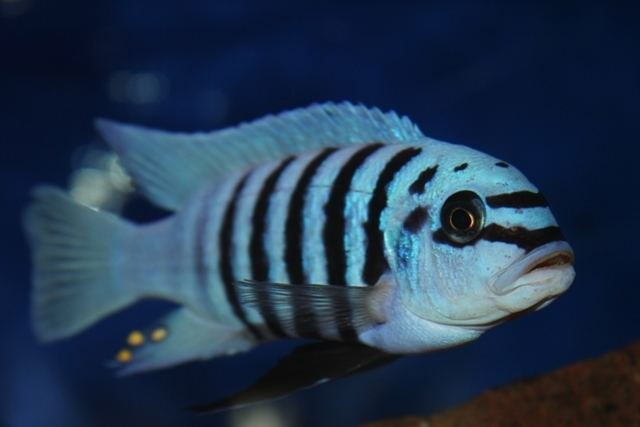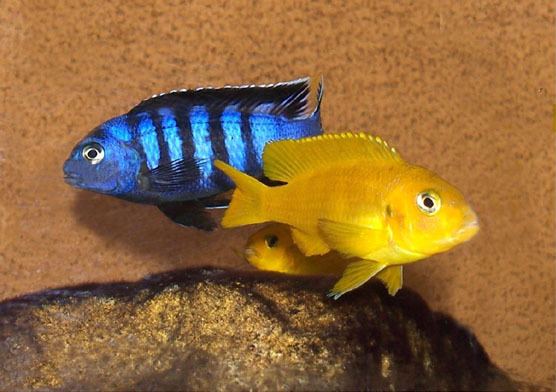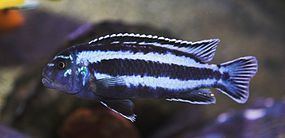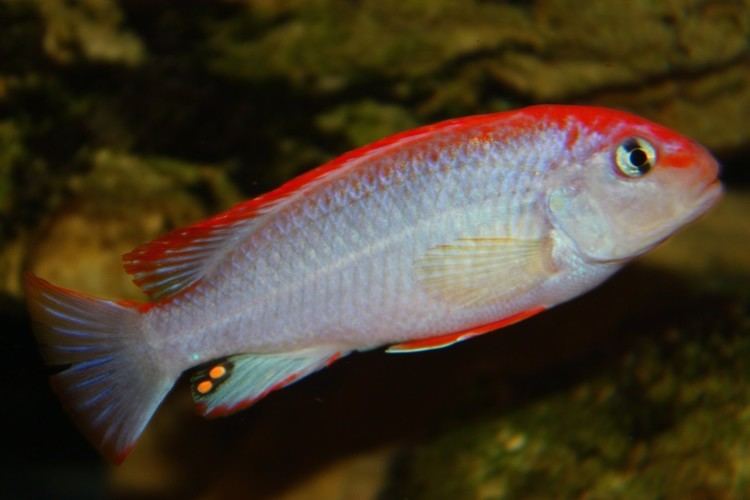Subfamily Pseudocrenilabrinae Higher classification Cichlid Rank Genus | Scientific name Pseudotropheus Phylum Chordata Order Perciformes | |
 | ||
Lower classifications Pseudotropheus demasoni, Elongate mbuna, Pseudotropheus sp "acei", Pindani, Pseudotropheus crabro | ||
Pseudotropheus saulosi breeding female picking up eggs
Pseudotropheus is a genus of fish in the family Cichlidae endemic to Lake Malawi in Eastern Africa. Like some other large cichlid genera, such as Cichlasoma, a number of related fishes have been recently reassigned to different genera such as Tropheops or Maylandia. Some species of Melanochromis in turn have been moved into Pseudotropheus. Mbuna literally means "rockdweller" and this description accurately depicts the lifestyle of these cichlids which mostly live in rocky areas. Most pseudotrophine cichlids are algal grazers in the wild. Like most cichlids from Lake Malawi, fish from this genus reproduce via maternal mouthbrooding. The males often have egg spots on their anal fins which attract spawn-ready females towards them where they attempt to retrieve the imitation eggs while the male emits sperm into her biting mouth, thus fertilizing the eggs. The female and male generally move in an intensive circular motion while they spawn. Eventually, the female retrieves all of her eggs and incubates them in her mouth without eating for 2–4 weeks depending on the species and the particular fish after which the fry are released. Most, possibly all species of Pseudotropheus will breed together if given the right environment.
Contents
- Pseudotropheus saulosi breeding female picking up eggs
- How to look after demasoni pseudotropheus demasoni dwarf mbuna
- Species
- In Aquarium
- References

How to look after demasoni pseudotropheus demasoni dwarf mbuna
Species
There are currently 26 recognized species in this genus:

In Aquarium

Fish of this genus are popular amongst tropical aquarists. They are relatively aggressive fish, usually requiring large aquaria with ample rock coverage for hiding and providing havens from aggression. It is usually important to keep a high population of fish in the aquaria to distribute the aggression. They are extremely hardy fish and can live nearly ten years. It is best to keep them with other African cichlids of similar size.



